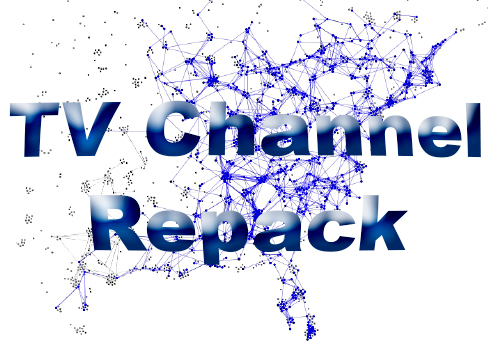Broadcasters Turn in $2.1 Billion for Reimbursement

WASHINGTON—So far, the tally for repacking broadcasters has come to more than $2.1 billion, exceeding the $1.75 billion set aside by Congress to reimburse qualifying TV providers displaced by the television spectrum incentive auction. Estimates of these moving costs, including those incurred by cable operators to accommodate the channel moves, were due from each affected broadcast licensee on Wednesday, July 12.
The Federal Communications Commission today released its preliminary total of those estimates, with a few tweaks to come. Jean Kiddoo, chair of the FCC’s Incentive Auction Task Force, issued the following statement:
“Based on information we have received as of 7 a.m. today, the aggregate amount of the estimated costs reported by reimbursement-eligible entities is $2,115,328,744.33. We expect to receive additional estimates from MVPDs and a small number of stations. In addition, the initial estimates that comprise this amount will be subject to a careful review by the commission and our fund administrator. The aggregate cost estimate provided today will therefore change for purposes of the initial allocation of reimbursement funds.”
The reimbursement fund was designed to cover “reasonably incurred” relocation costs based on a catalog of expenses adjusted from the December 2013 Widelity Report. The spectrum auction chased broadcasters off Chs. 38-50, reassigned those airwaves to wireless broadband and sold them to carriers for $19.8 billion in an auction that concluded in April. Broadcasters accepted a collective $10 billion to give up the channels. Those who receive auction proceeds are not eligible for reimbursements.
Only full-power and Class A TV licensees involuntarily assigned to new channel assignments are eligible, as well as cable TV operator modifications done to receive new channel assignments. Also, TV licensees that voluntarily moved from UHF to VHF, from high to low VHF, and channel-sharing hosts that have to move are eligible, according to the FCC’s May 2014 Report and Order, “Expanding the Economic and Innovation Opportunities of Spectrum Through Incentive Auctions,” and in the Code of Federal Regulations.
Initially, the commission intended to allow a drawdown of 80 percent of submitted costs for commercial licensees and 90 percent for non-coms. The commission stated previously it would distribute the funds proportionately if they exceeded the $1.75 billion set-aside. The $1.75 billion is about 83 percent of the $2.1 billion submitted.
NAB President and CEO Gordon Smith issued the following statement after the FCC announced the $2.1 billion repack estimate:
“Congress’s passage of the voluntary broadcast TV incentive auction legislation was premised on a promise that no TV station would be punished for not participating in the auction. Today’s release of total estimated costs for the ‘TV repack’ shows a shortfall of over $365 million in available repacking funds, with a number of television stations and MVPDs not yet included in the total. That number could grow as stations amend cost estimates due to changed circumstances.
“NAB will work closely with Congress to address this issue, and to additionally ensure that no TV viewer or radio listener loses access to the entertainment and lifeline local broadcast programming they rely on today.”
Also see…
April 13, 2017 “987 Stations Displaced, 175 Broadcasters to Split $10 Billion”
The auction results are in and the new TV channel assignments are out.
April 3, 2017
“$1.75 Billion Reimbursement Process Outlined”
Eligible commercial licensees initially will be able to “draw down” expenses for up to 80 percent of their estimated costs, and non-commercial licensees, up to 90 percent.
Oct. 4, 2016
“FCC Launches TV Station Reimbursement Beta Test”
The beta environment automatically will be open to all broadcasters with an active facility associated with their FCC registration number and password in the commission’s License and Management System database.
March 25, 2016,
“Repack Reimbursement Process Outlined,”
Pre-auction planning expenses may comprise tower mapping or other engineering consultation work.
The professional video industry's #1 source for news, trends and product and tech information. Sign up below.
